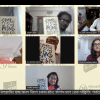‘Indigenous In the Edge’ outlines lives of 17 ethnic groups in Bangladesh

The Chittagong Hill Tracts and plain land are home to over 50 indigenous groups who are diverse in their language, clothing, food habits, livelihood, religions, and cultural rituals and traditions.
"Unfortunately traditional cultural activities of these communities are now at risk due to change brought about by modern civilization, poverty, and external factors such as negative attitude and actions of certain groups of people", writes Shaheen Anam, Executive Director of Manusher Jonno Foundation, in her introduction to MJF's recently published documentation of Bangladesh's indigenous communities.
Indigenous In The Edge: A Documentation of the Plain Land Ethnic People of Bangladesh (Manusher Jonno Foundation, 2022), supported by UK Aid, is a collection of profiles and photographs that outline the cultural practices of 17 of these indigenous peoples.
Members of each community have reviewed the information that attempts to offer insight into the histories, homes, the clans and tribes that make up each community, the food habits and religious and cultural practices, and the languages, written and oral, they employ.
"The education rate among the Malo community is poor", says a chapter on the ethnic group that came to Bangladesh from Ranchi India, and currently resides in the village of Ghoraghat in the district of Dinajpur. "The dropout rate from primary and secondary school levels is high, but girls are ahead of boys in education. Unemployment is the biggest problem for them. They are losing their language, culture, and ancestral customs at times."
As Sanjeeb Dhrong, General Secretary of the Bangladesh Indigenous Peoples' Forum, points out in the book, research on indigenous peoples living in the plain land is scarce and it is often this lack of understanding and communication that fuels the discrimination committed against them.
Indigenous In The Edge attempts to fill some of this knowledge gap by featuring the cultural practices, and not just the issues plaguing each community. This allows the book to strike a neutral tone in its text, supplemented by photographs that document the 17 indigenous groups: Garo, Koch, Hajong, Kora, Dalu, Barman, Hodi, Santal, Malo, Patro, Oraon, Munda, Mahato, Mahali, Ganju, Banai, and Khasi, in moments of celebration, faith, and artistry. The text could have been even stronger if the stories were told from the perspective of the ethnic groups' members—writing from the point of view of "us" and not "them".
The collection was put together with concept and coordination by Mohammad Zahed Hasan, Senior Programme Manager, MJF, photography by Din Mohammad Shibli, and a team of contributors and researchers.

 For all latest news, follow The Daily Star's Google News channel.
For all latest news, follow The Daily Star's Google News channel. 




Comments